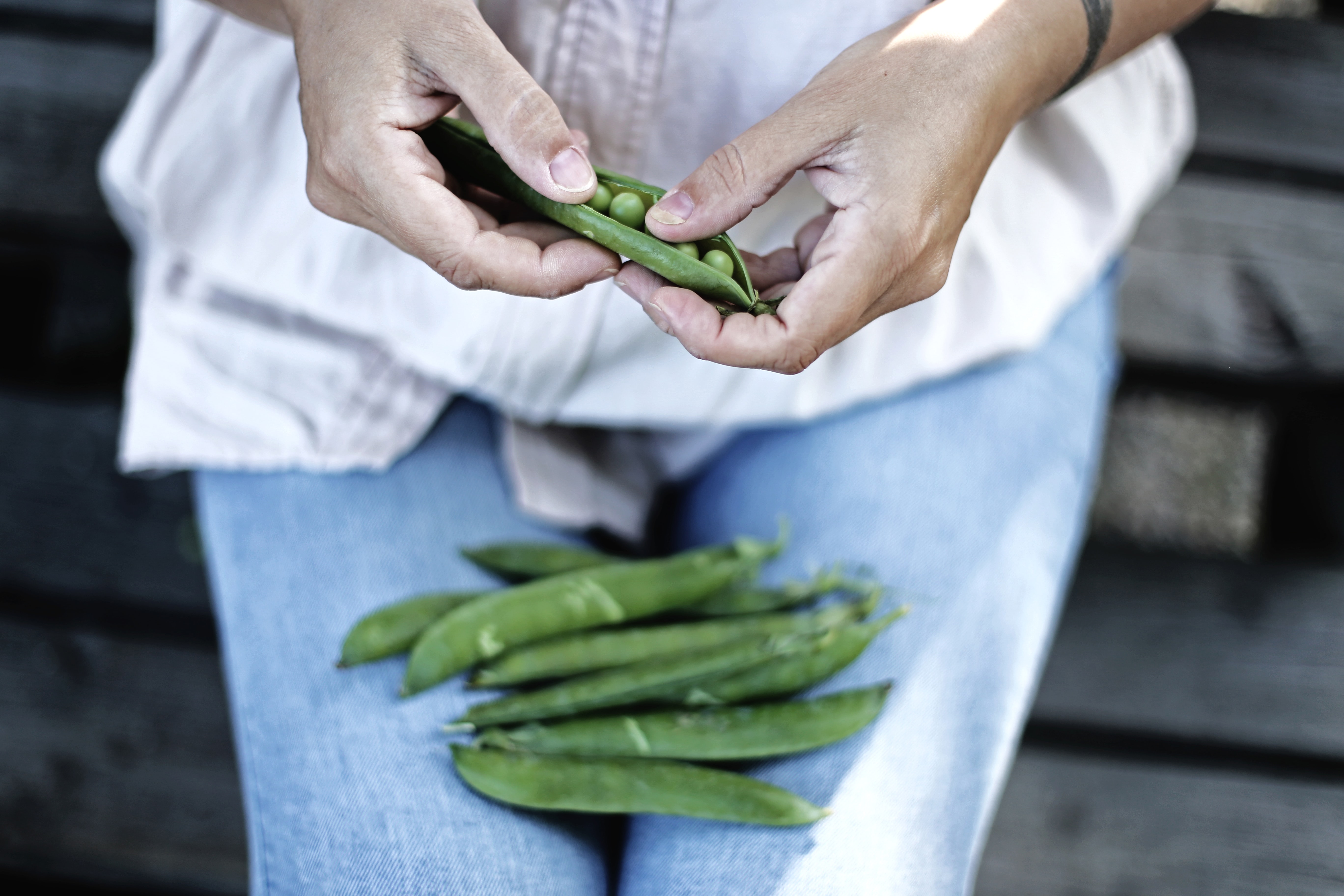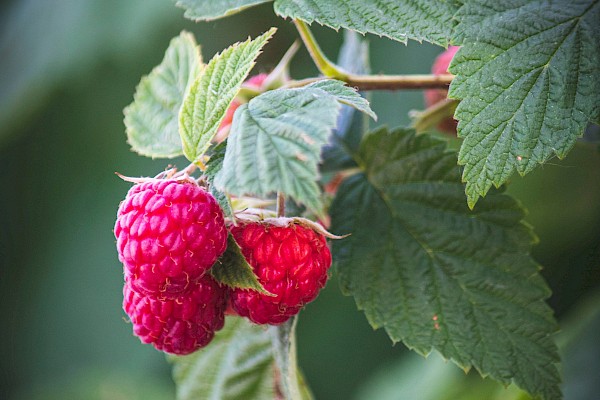Peas
Small, round and green – this is how we imagine a pea. However, that is not the only pea there is, and not every «pea» looks like that. The pea is even a major star, and plays a decisive role in the fairy tale «The Princess and the Pea». There are also sayings about peas. However, neither appearance shows the pea in a particularly good light. While in the fairy tale it is used to describe an excessively sensitive person, the saying «pea brain» expresses that someone is somewhat lacking in intelligence. This article gives the pea an opportunity to show its other side. We shed light on its origins, touch upon the little vegetable’s health benefits and illustrate its important role in genetic research.
Where do peas come from?
When we talk about peas (Erbsli in Swiss German) in this article, then we mean classic garden peas – small, round and green, the way most of us know them. Peas are one of the oldest cultivated legume plants. They probably originated in the Middle East and were cultivated approximately 7000 years BCE. They appeared on our plates by the 19th century at the latest.
As you can probably imagine, there is more than one sort of pea. In fact, beside the classic garden pea, there are approximately 80 varieties (sugar snap peas, round peas, marrowfat peas, etc.) with countless names. This means that a single pea variety may be known under several different names. One example here is the sugar pea. Never heard of it? What about the mangetout? Do you know this term? Then you also know the sugar pea – which is just another name for mangetout. The mangetout is also known as the snap pea or the snow pea. Mangetouts differ from ordinary peas in that you don’t just eat the seeds (the peas themselves) but also the pod (the shell). The pods remain tender when the peas are ripe. In addition, they are really good to eat raw and also make a great snack for between meals. Other characteristics that differentiate pea varieties include, for example, the colour of the flowers (coloured flowers produce more strongly flavoured peas than white flowers), the form of the seed (wrinkled or smooth), the size of the seeds or the length of the pod.
In Switzerland, peas are in season in June and July. However, they will keep in the freezer all year round. If you still want to enjoy fresh Swiss peas, now is the time to buy them in shops or at the market.
Are peas healthy?
Peas are known for being rich in protein. One hundred grams of peas will supply a whopping 5.6 grams of protein. What’s more, they are high in carbohydrates and dietary fibre and very low in fat. They also contain vitamins A and C, calcium, magnesium, iron, sodium, manganese and zinc – these little green veggies really pack a punch.
Consequently, in nutritional terms, peas are very healthy and an important source of plant protein. And what about the effects on our health? Unlike soya protein, pea protein is hypoallergenic. That means that people very rarely experience allergic reactions to pea protein. In addition, studies have shown that the pea also provides health benefits. They may have blood-pressure and cholesterol lowering properties. In the context of a balanced diet, they may contribute to reducing the risk of non-communicable diseases. Peas are also beneficial for our intestinal flora.
And peas are not just good for our health. Besides their health-boosting components, peas have played an important role in genetic research.
Small and meaningless? As if!
With sweetcorn, the pea is one of the most studied plant varieties. The natural historian Gregor Johann Mendel is largely responsible for this. What did this gentleman do with peas? He was interested in the question of how certain characteristics are inherited from plant to plant, and used the pea as his experimental subject. In this context, he grew thousands of pea plants and conducted more than 10,000 hybridisation experiments. Using these experiments, he deduced three rules of inheritance, known today as Mendel’s Laws of Inheritance. In his time (the 19th century), Mendel met only with incomprehension. His achievement was not recognised until years after his death, and today he is considered the father of genetics.
Peas didn’t just play an essential role in genetic research; the modern food industry takes great interest in them. Pea protein in particular is receiving increased attention – it can be used to make meat substitutes and is increasingly found in vegan products.
Consumption and storage
Not all pea varieties should be eaten raw. As you already know, mangetout can be eaten raw with the pod. Garden peas, by contrast, should not be eaten raw. They contain toxins which are destroyed by heat. Even if you want to rustle up a salad with them, you must cook them briefly first. In terms of flavour, peas range from subtle and sweet-ish to sweet and strong. As you now know, one of the important factors here is the colour of the flower.
You should consume fresh peas as quickly as possible. They can, however, be stored in the fridge for two to three days. If you want them to keep for longer, you can freeze them. This way they will keep for several months. How do you freeze peas? Blanch them briefly in boiling water, rinse under the cold tap and finally pour them into a freezer bag. They are now ready for your freezer.
Do you know how to transform peas into a fine dining experience? Below you can find two delicious recipes that are perfect for summer.
Recipe ideas
Pea gazpacho
Serves four
- 300 g peas (if you buy them in the pod, you’ll need approximately 1 kg)
- 1 spring onion
- ½ a green chilli
- ½ a cucumber
- 2 tablespoons herb vinegar
- 1 teaspoon brown sugar
- ½ teaspoon salt
- 300 ml cold vegetable stock
- 2 tablespoons olive oil
Method
- Cook the peas in boiling salted water for approximately 3 minutes until al dente. Then drain them and leave them to dry.
- Chop the chilli and the spring onion. Peel and halve the cucumber, remove the seeds, chop the flesh finely.
- Mix the peas, cucumber pieces, onion and chilli with the vinegar, sugar and salt. Leave the mixture to marinade for approximately 30 minutes, stirring from time to time.
- Add the vegetable stock to the mixture and purée until smooth. If the soup is too thick, thin it with a little more stock. Season with salt and olive oil, then chill the soup for approximately 30 minutes. If you like, you can serve the soup with ice cubes and garnish with more (cooked) peas.
[Source]
Pea salad
Serves four
- 500 g peas (fresh or frozen)
- 1 onion
- 1 clove garlic
- 150g smoked tofu
- 3 tablespoons oil
- 2 tablespoons vinegar
- 1 tablespoon mustard
- Fresh mint
- 2-3 tablespoons seeds (pumpkin or sunflower seeds)
- Salt
- Pepper
Method
- Cook the peas for 3-4 minutes in boiling salted water and then drain them.
- Peel and finely chop the onion and garlic.
- Dice the smoked tofu and fry it in oil (1 tablespoon) until crisp.
- Mix the remaining oil with the vinegar and mustard.
- Wash a few mint leaves and chop finely. You can leave some leaves whole and use them as a garnish when serving.
- Mix the peas, onion, garlic, smoked tofu and marinade (oil, vinegar, mustard). Add the seeds and the chopped mint and season the salad with salt and pepper. Leave the flavours to blend for at least 30 minutes.
[Source]
Enjoy your kitchen experiments and bon appétit!
References
BR Wissen. (2018, 5 September). Gregor Mendel, das Erben und die Erbsen. https://www.br.de/wissen/geschichte/historische-persoenlichkeiten/gregor-mendel-vererbung-mendel-genetik-100.html
Duden. (2008). Redewendungen. Wörterbuch der deutschen Idiomatik (3rd ed.). Bibliographisches Institut & FA Brockhaus AG.
Ge, J., Sun, C. X., Corke, H., Gul, K., Gan, R. Y., & Fang, Y. (2020). The health benefits, functional properties, modifications, and applications of pea (Pisum sativum L.) protein: Current status, challenges, and perspectives. Comprehensive Reviews in Food Science and Food Safety, 19(4), 1835-1876. https://doi.org/10.1111/1541-4337.12573
Kappert, H. (1929). Die Erblichkeitsverhältnisse der züchterisch wichtigen Eigenschaften der Gartenerbse. Der Züchter, 1(3), 79-86. https://doi.org/10.1007/BF01812559
Schmidt, V. (2021, 25 May). Erbse. Mein schöner Garten. https://www.mein-schoener-garten.de/pflanzen/gemuse/erbse
Swissmilk. (n. d.). Erbsensorten? https://www.swissmilk.ch/de/rezepte-kochideen/tipps-tricks/erbsensorten/
Verband Schweizer Gemüseproduzenten. (n. d.) Erbsen. Schweizer Gemüse. https://www.gemuese.ch/gemuesearten/erbsen
 subscribe to newsletter
subscribe to newsletter


